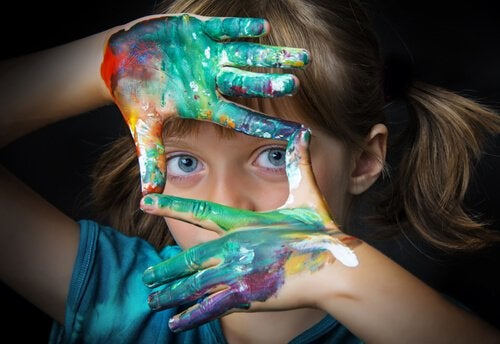The role of art in the development of children is more important than one imagines, as well as being considered a fundamental discipline for the education of children. On the one hand, artistic activities promote learning from other disciplines, such as reading or mathematics, and on the other hand, promote the development of perception, motor coordination and social interaction.
In addition, using art as a vehicle for children to express themselves is very rewarding; an excellent form of communication for them. Through different types of artistic activities, they can reveal their thoughts, feelings and interests.
- The promotion of art in childhood is about proposing strategies to channel the different forms of expression of children.
For educator Lina Idurraga, a specialist in children’s plastic expression, art is an experience that allows children to express their feelings, and can even be used to treat all kinds of disabilities because of the large number of beneficial properties it offers.
According to this author, through music, dance and body expression, children convey ideas and feelings, if adults can interpret this language, they can enter the world of children.
In addition, psychologists agree that getting acquainted with art is positive at any age. However, childhood is the perfect time to teach children different artistic disciplines; exist due to their great ability to easily absorb any type of learning.
Then we will see what the impact of art is on the development of the child.
Music was introduced to the preschool curriculum because of the importance that this type of art represents in the development of the child, is used in areas such as intellectual, auditory, sensitivity, speech and motor.
The musical language is universal and children who live in contact with music get several advantages. Among other things, they learn to live better with other children, learn to relax and stimulate their hearing ability.
In addition, music promotes learning through children’s songs, in which rhymes and repetitions are continuous and accompanied by gestures during singing, playfully children enrich their vocabulary and better understand the meaning of words.
On the other hand, singing songs for babies and listening to music with them, in addition to producing physiological changes, promotes the development of a strong emotional bond with parents and also stimulates their emotional intelligence.
Psychopedagogues specialized in early stimulation of reading agree that it is a difficult habit to acquire in adulthood; In general, the love of reading will only be consolidated when you wake up in childhood.
Reading children is one of the most rewarding activities in the world, developing cognitive skills such as memory, language, abstraction and imagination.
Books allow children to discover a wonderful world of dream and fun. Early and playful reading means that children do not understand it as an obligation, but as a form of entertainment, in this way it will be much easier for them to incorporate books into their repertoire of games and activities in their free time.
However, whether children start reading in school or not, this learning should be strengthened at home to fully develop, support them in this will strengthen ties with them and help create a very special relationship, so reading should not be seen as an obligation, but as a moment of pleasure.
Drawing and painting are two artistic activities that facilitate and allow the child to improve in many areas, among other things, help to develop fine psychomotority, writing, reading, creativity and increase self-confidence.
In addition, these disciplines are a great way for the child to express his feelings, emotions and feelings, and if that were not enough, he contributes significantly to the formation of his personality and his psychological maturity.
To promote natural creativity, it is advisable to promote free design, with it the child can unleash his imagination and his personal way of expressing himself, for this it is recommended to facilitate access to different materials, such as colored pencils. , clay, paintings and watercolors, and different means of drawing such as paintings, murals, cartons, fabrics?
“The painter has the Universe in his head and in his hands. “-Leonardo DeVinci-
Another way to introduce art into the development of the child is theatre, the practice of this discipline helps children learn values such as respect and tolerance.
In children’s theatre, children stage plays in which they have to put themselves in the shoes of people very different from them, in this way they can identify with characters who learn from their experience, in this way their mental openness will be fostered. .
Theatre can also open the door to imagination and creation. While these benefits can be achieved simply by bringing the child to a play, they will be amplified if the child acts on his or her own.
Through movement and body language, children improve and promote physical development: healthy body growth, safe management, flexibility and development of natural skills to move, run, jump and spin, as well as gain the balance, coordination and control needed for their evolutionary development.
In addition to these physical skills, children’s expression through body and movement clearly affects the development of their emotional intelligence, as well as social and creative aspects.
For this reason, although body expression is not often considered a type of art, it can offer benefits as interesting as those of more classical disciplines.
In short, the important thing is to promote art in child development so that children can express their feelings in the best way, so if you have a child at home, one of the best things you can do for him is to promote his artistic side.
“Imagination only becomes great when the human being, with his courage and strength, uses it to create. Otherwise, imagination becomes a mind that roams the void. -Maria Montessori-

